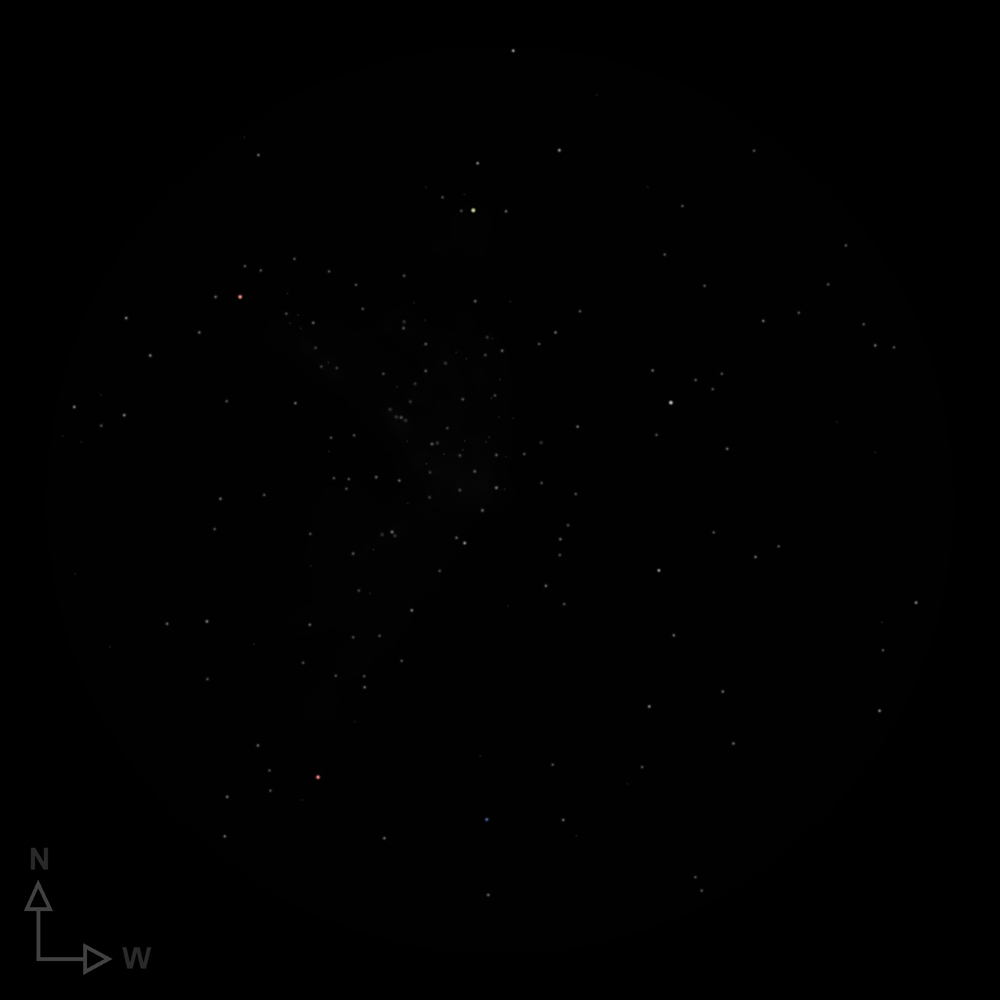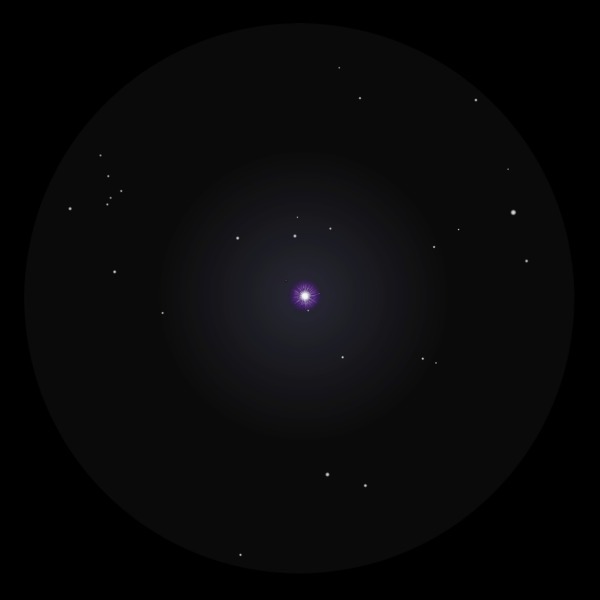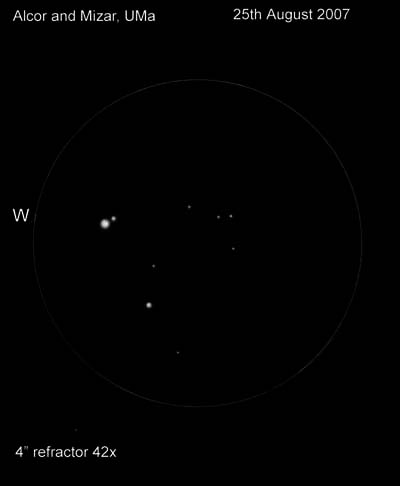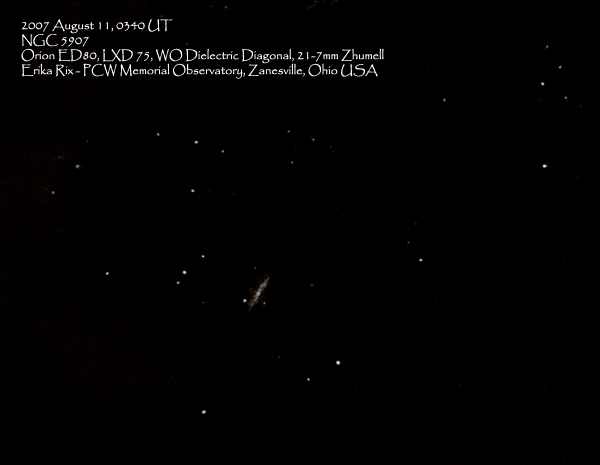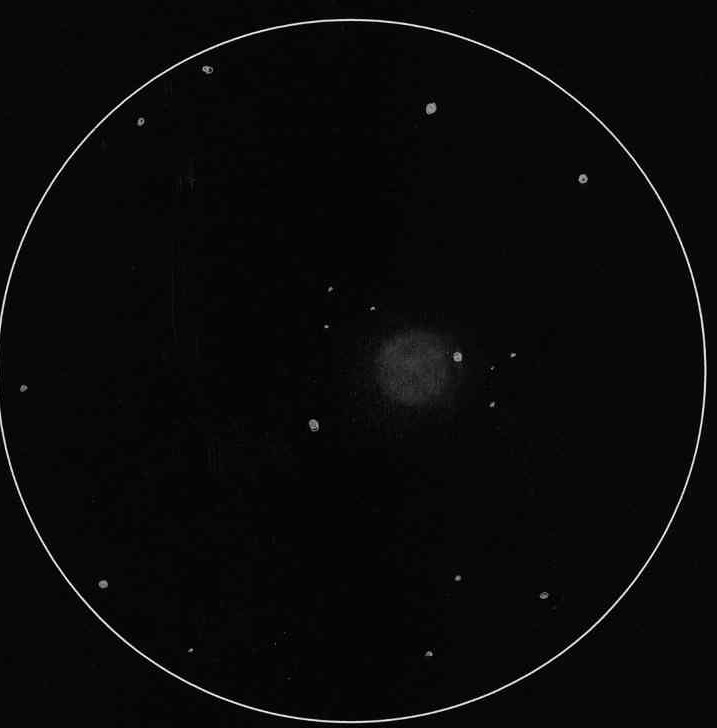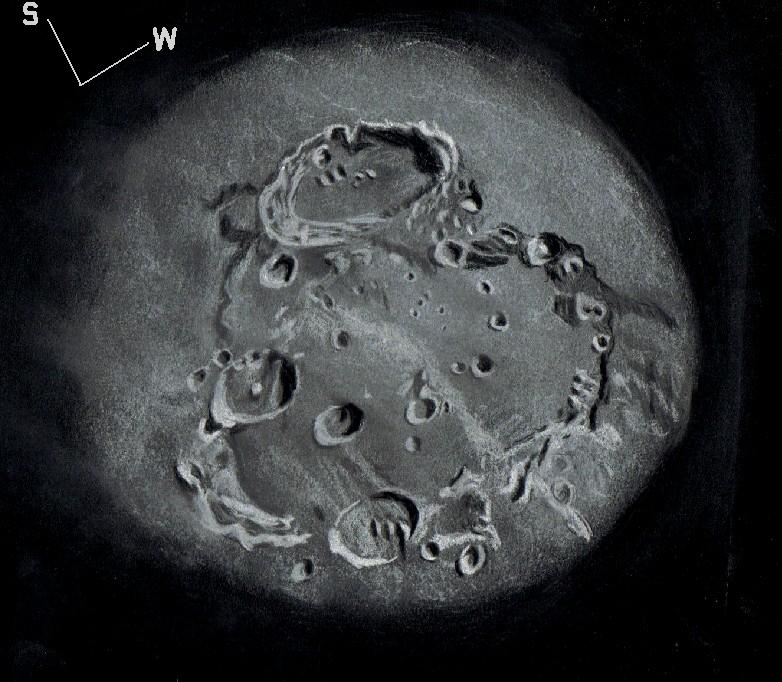Object Name: NGC 6939 (H.VI.42)Object Type: Open Cluster
Constellation: Cepheus
Right Ascension (2000.0): 20h 31.4m
Declination (2000.0): +60° 38′
Magnitude: 7.8
Diameter: 8′
Trumpler Type: I 1 m
Telescope: Parks Astrolight EQ6 • 6″ f/6 Newtonian Reflector
Eyepiece: 7.5mm Parks Gold Series Plössl • 120x, 26′ FoV
Date & Time: 8 September 2007 • 03:30 UT
Seeing Conditions: NELM 6.3 • Pickering 8
Observing Location: Cuyamaca Mts., San Diego Co., California
Sketch Information: Digital rendition based on paper and pencil eyepiece sketch.
NGC 6939 is a subtle, yet beautiful open cluster in the southwestern reaches of
Cepheus, near the border with Cygnus. NGC 6939 is famous for sharing a low-power
field of view with the spiral galaxy NGC 6946; this celestial odd-couple has been
the target of countless astrophotographs. The juxtaposition of these two objects is
equally accessible to the visual observer with access to dark skies and a field of
view wide enough to accommodate the 38′ that separate the duo.
The most expeditious way for the star-hopper to locate this object is to center your
scope on 3rd magnitude Eta (η) Cephei and sweep about 1.5° east and just over 1°
south with your lowest-power, widest-field eyepiece. At 30x, I see a fairly
conspicuous patch of nebulosity studded with a few dozen faint stars nestled in a
very rich patch of the Milky Way. The spiral galaxy NGC 6946 glows feebly ½° away
to the southeast.
Zeroing in on this stellar concentration with higher magnifications brings out a
delicate array of faint stars ranging from magnitude 11 down to 14 and beyond. The
soft, often glittering haze of unresolved stars persists in the background even at
high magnifications. The stars seem to be arranged in strands stretching toward the
east like gleaming dewdrops in a broken spider’s web. In that direction (east) it
is very difficult to discern where the cluster ends and the starry expanse of the
Milky Way begins. The western edge of the cluster, in contrast is sharply defined,
particularly on the southwestern side. This sudden drop-off in the stellar
population gives me the impression of an interposing finger of dark nebulosity
thrusting northwestward.
Sir William Herschel discovered NGC 6969 on September 9, 1798 with his 18.7-inch
reflector. This cluster lies at a distance of about 4,000 light-years and is
believed to be 1.8 billion years old based on the Hertzsprung-Russell diagram of its
constituent stars.
Eric Graff

